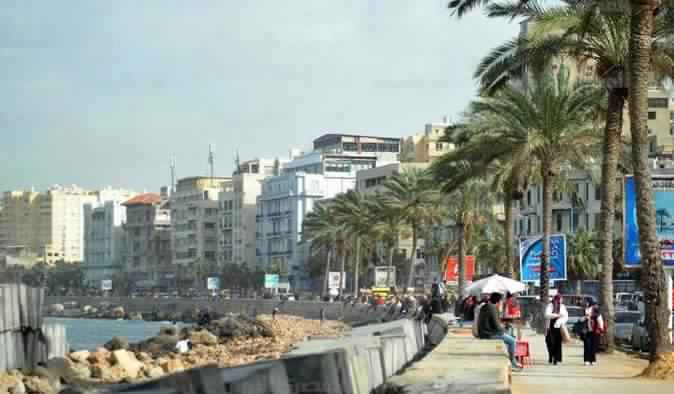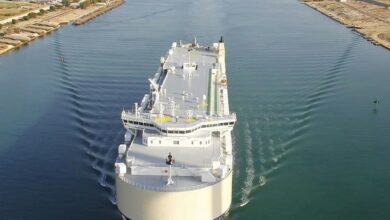If you discern a giant crystal lake looming in the horizon of Sharm el-Sheikh’s sizzling desert, don’t think it is a mirage — it is indeed the world’s largest crystal lagoon, officially recognized last month by Guinness World Records.
Designed by the renowned Chilean architect Fernando Fischmann and still under construction, the 12-hectare Sharm el-Sheikh lagoon earned Egypt the title of world’s largest navigable crystalline lagoon, surpassing its 8-hectare Chilean sister project, San Alfonso del Mar, which held the previous record.
Engineer Yehia al-Meteiny, general manager of the Gold Pyramids Plaza and chairman of Golden Coast — the developer of the Sharm el-Sheikh and Hurghada Citystars projects — expressed his great pride over the project in a statement.
“The record-breaking lagoon will add a new dimension to the tourism and real estate markets not only in Egypt, but promote the city of Sharm el-Sheikh, which would play a pivotal role in bringing the city back to the spotlight despite the current adverse conditions,” Meteiny said.
The crystal lagoon is located on the Red Sea Riviera over 7.5 million square meters, 3 km away from the Red Sea. It involves a master plan of 30,000 home units, hotels, a museum and a shopping center.
The project came as a result of an agreement between Crystal Lagoons Corporation and local partners of Pyramids Plaza and Citystars Holding.
Although Crystal Lagoons company assured that all its projects are environmentally friendly, claiming to use the crystalline lagoon technology, which is “completely environment-friendly and extremely energy efficient compared with conventional pool systems,” according to the company, some environmental experts were skeptical about the effects of the project on wildlife and development of the area.
Sherif Baha El Din, environmental consultant and chairman of the board of Nature Conservation Egypt NGO, told Egypt Independent that the whole project contradicts the Egyptian government's 2020 plan of turning Sharm el-Sheikh into a green city.
“The question here is bigger than developing a project — it is about the national vision Egypt holds for this ecologically rich and sensitive area,” Baha El Din said. “I don’t understand how one city can start applying drastic eco-friendly measures and at the same time start projects of the mass tourism model, which is known to highly risk wildlife and the environment.”
Earlier this year, the Tourism and Environment ministries and the governor of South Sinai signed a US$238 million protocol for joint cooperation to develop Sharm el-Sheikh into a green city by 2020. The plan is to introduce renewable energy plans, cut water use and improve waste management to boost the environmental credentials of a destination where sprawling tourism activities have spoiled the area in recent decades.
“The project might seem in theory to take all risks into consideration, but a giant project like this is similar to building a nuclear power plant. It is not about continuous leakage or pollution — it might be one incident that can ruin everything beyond fixing. It should be of a concern not only to Sharm el-Sheikh but to all of Egypt,” Baha El Din said.
He expressed further concern regarding the project location, which is close to the ecologically rich and sensitive Nabq Protected Area — an outstanding natural area with 800-meter-deep reef walls.
“The Red Sea is already facing enough environment hazards,” he said. “Such projects should be implemented on the Mediterranean coast, which is much less ecologically sensitive and can tolerate more mass tourism activities.”
On the other hand, Mohamed Salem, director of South Sinai National Parks, told Egypt Independent that such a project could actually be good for the ecologically sensitive Red Sea.
“I believe that building alternative massive water flats can help relieve some of the pressure from the coastlines. Hurghada and Sharm el-Sheikh have been exploited beyond their ecological capacities and had already showed signs of environmental degradations due to tourism. If not for new solutions like lagoons, the whole ecological system might get damaged for good,” Salem said.
But Salem stressed that all stakeholders from governmental-related bodies to environmental NGOs and groups have to raise all economic and ecological concerns during the public hearings, which will be conducted regularly to further discuss all alarming signs along building the project.
The international lagoon-building company will be dedicating a big portion of its planned development to Egypt: Out of its 50 currently planned projects throughout the Middle East, 12 are set to be built in Egypt. Beside Sharm el-Sheikh, other developments are planned in Cairo, Hurghada and the new resorts near Alexandria.
Regarding the impacts on marine life, Mahmoud Hanafy, a marine ecologist at Suez University and government adviser, showed a deep concern about the wildlife in the area.
“Although developers often consider artificial lagoons as an economically attractive landscaping feature, it might actually interfere in the ecological cycles of the region. Having an artificial huge lake might affect the routes of huge flocks of migratory birds that pass through Sinai.” Hanafy told Egypt Independent.
Hanafy stressed that for the case of complicated aquatic ecosystem like a lagoon — in terms of sewage, pollution, quality of water, services provided and material used — it would be very difficult to predict the risks or the natural reaction of the environments and wildlife there.
Tourist development in Egypt has expanded considerably over the last decade, particularly along the Red Sea coast. According to a 2010 USAID report, more than 1.2 million tourists visit the Red Sea coast annually, bringing in more than $1.2 billion in foreign currency and generating more than 275,000 jobs.
The Red Sea has become one of Egypt’s premier tourism destinations, based in largely on its unique ecosystem, being home to more than 1,200 species of fish, of which 10 percent are endemic.
The rich diversity is in part due to the coral reefs that extend along its coastline and are 5,000 to 7,000 years old. However, in recent years, tourism development has increasingly clashed with the conservation of Red Sea resources.
Mindy Baha El Din, a board member at Nature Conservation Egypt, stressed to Egypt Independent that such a project would jeopardize the Egyptian Red Sea heritage and strip this area of its main source of attraction.
“I am afraid that Sharm el-Sheikh might turn into a new North Coast, which might deprive the city from its natural source of beauty, and main tourism product — the nature habitat and reserved reef — which would in turn bring international tourism down and destroy the area,” she said.




